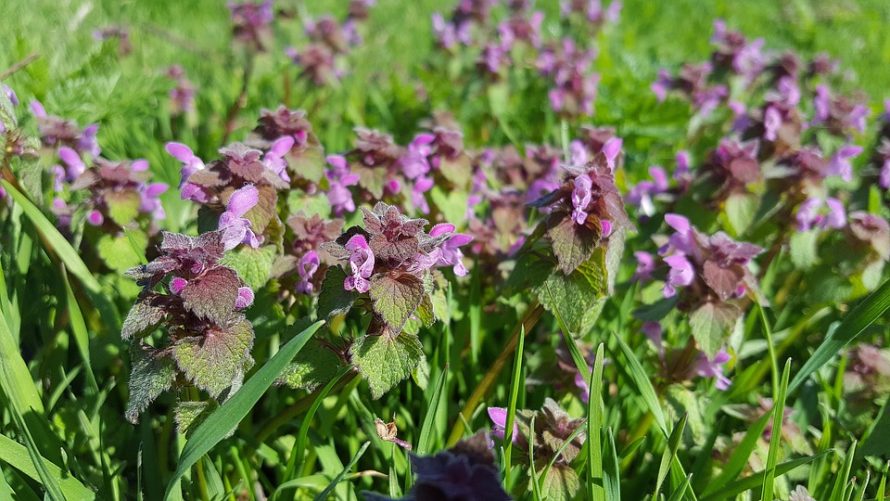One of the first signs of spring in my garden are the purple dead nettles (Lamium purpurea). They pop up seemingly out of nowhere when the air begins to warm. Due to their ubiquity in our landscape, you would think that they are a native plant but you would be wrong. They are native to Europe and Asia, brought here by the European colonists. Purple dead nettles were a must in their gardens because of the many uses for the plants.
Without access to grocery stores or refrigeration, European colonists had to depend on dried or smoked foods throughout the winter months. When spring arrived, with food supplies dwindling, spring greens, including purple dead nettle, became an important part of their diet until they could plant and then harvest from their gardens.
The leaves are edible. Some say the entire plant save the roots is edible. The leaves are eaten raw in salads or used in stir fries. Chopped finely, they flavor sauces. The flavor is kind of grassy with floral notes. Surprisingly, although a member of the mint family, it does not taste minty.
Purple dead nettle was most useful as a medicinal herb. Brewed into a tea, it was used to treat chills and promote perspiration. The tea was also used to treat kidney issues. Other uses for the plant was as both a diuretic and purgative, as well as an astringent. The leaves were applied to wounds to stop bleeding.
Purple dead nettle is not related to stinging nettles. It is a member of the mint family as evidenced by its square stem. The name “dead nettle” refers to the fact that the leaves are similar to stinging nettles but lack the stinging hairs so the sting is considered “dead”.
Purple dead nettle is an annual plant, one of a small group of winter annuals. Winter annual plants’ seeds germinate in the fall and form a rosette of leaves that overwinter. Here in the US, the rosettes can survive winters in USDA growing zones 4 through 8. The following spring, they complete their vegetative growth growing up to 12 inches tall. The plants produce flowers and seeds and then die in the late spring or early summer.
The leaves often have a reddish hue. In Great Britain, the plants are known as Red Deadnettles because of the coloration of the leaves. The pollen is also red. The flowers are an important source of pollen and nectar for beneficial insects during a time of year when little else is blooming. The flowers are tubular in shape and grow in a cluster at the tops of the stems. The color ranges from pink to lavender. Bloom time is April. The flowers can last up to six weeks. When they fade, they are replaced by four seeds each.
The plants grow best in full sun, but will tolerate some shade. They will grow in almost any kind of soil as long as it is not constantly wet. They reseed easily, often forming mats of plants in the open spaces of our early spring gardens.
If you would like a readily available source of spring greens and medicinal herbs nearby, purple dead nettles are easy to transplant from the wild. Dig the plants up in either the spring or the fall and plant them in your garden. The seeds are also available from specialty seedhouses. If you are adventurous, you can try harvesting the seeds directly from the plants. Plant them in the fall by firmly pressing them into the soil and then covering them with a layer of mulch.

